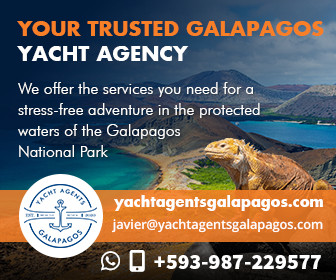Santiago de Cuba to be recommended
Published 15 years ago, updated 5 years ago
We entered the port of Santiago de Cuba on 13 May 2009.
As we arrived, I called “Morro Santiago” (as suggested on a 12-year-old cruising guide) but got a reply from the Marina Punta Gorda. When I had trouble with Spanish, another person came on (Jorge) and assisted us in. We had to anchor for about one hour to wait for another yacht to be cleared in and then moved alongside the jetty.
Marina staff were EXTREMELY welcoming (and in English) and so were all the officials.
Clearance involved 6 different people and a fair amount of paperwork. The cost was 25CUC for customs and 30CUC for quarantine plus another 5 euro for the two officers inspecting our vegetables. Customs spent quite some time inspecting and looking for things. The security in the marina is ridiculously high as we could not invite any Cuban friends to our boat. In other words, the marina is totally safe from any theft etc.
The marina staff will give a briefing and help with everything but being government workers in a government marina, they can not say certain things and have to discourage you from using any black-market services.
When asking about former closures the harbour staff explained that during Feb the incinerator had been broken and as all the waste from international yachts had to be burned (!) no foreign yachts were allowed in for a while.
We found the “marina” quite protected and the old concrete jetty had smooth edges and was fairly high – adequate for a good tie-up. It wasn’t the best or most ideal but with the normal selection of fenders that all cruising yachts carry the tie-up posed to problems at all. A southerly swell may make things a little uncomfortable but passing ships did not create any significant wake.
The weather was fairly mild during our stay so we have no experience of it in bad weather. The concrete factory is close by – we drove past it many times – and didn’t see any dust problems. We had no problems with any yellow ash (from the cement works) but these things are weather dependent. Perhaps we were lucky.
There was three large catamarans and three mono-hulls tied up – each on their own private spot – and nobody was anchored out.
There is apparently a new water piping being installed for the marina area but work is not progressing well at all. Therefore all water is brought in by a truck and stored in a nearby tank. Water is not always available. We had it working on the first day, off for 2 or 3 days and then on again. Power was available at the jetty all the time.
Authorities were friendly and welcoming despite the associated rituals and restrictions.
The town and associated transport are expensive, but people are very accommodating, helpful and friendly. The tiny “chandlery” has mostly alcohol and some basic fishing equipment. There is a staff cantina – a lovely waterfront bar – where you can buy cold beers and drinks. The marina is willing to put all your shopping from the marina outlets to your tab and wait for payment upon departure.
There is a rather fancy restaurant upstairs which is open to the public. Eating out is mostly done in peoples small private restaurants which cannot be found. The restauranteurs will find you and a few are hanging around the marina. (The one with lots of gold teeth is very pushy and felt too aggressive to us – the only exception to the exceptional friendliness of all Cubans).
Every private car is a taxi, the cost from the marina to the city is 10CUC – it is possible to haggle a little but tourists are milked very well here. The “unofficial” taxi is usually a very old Moscwitch, Lada or, if you’re lucky, a 1955 Chevy Bel Air. There is also a bus service – very cheap and very unreliable and infrequent. Also, modern air-conditioned taxis operate, at a slightly higher rate.
Our experience was purely positive and I see no reason not to recommend the port of Santiago de Cuba to visit yachts.
The city is charming and safe – day or night – with many places for dancing salsa and drink cheap local rum. The only downside was the fact that transport and outings turned out fairly expensive. Local markets (for vegetables) are a big exception. With a Cadeca money change in front for getting some local pesos (about 24peso – 1 CUC – 90 cents US). The produce is very good quality and there is no haggle or overcharging from tourists.
The authorities (Marlin Marina) can be contacted on [email protected] (I hope!).
Lauri G Strengell
SY Aliisa
Cairns Australia (currently in Port Antonio Jamaica)
Related to following destinations: Cuba, Santiago de Cuba






